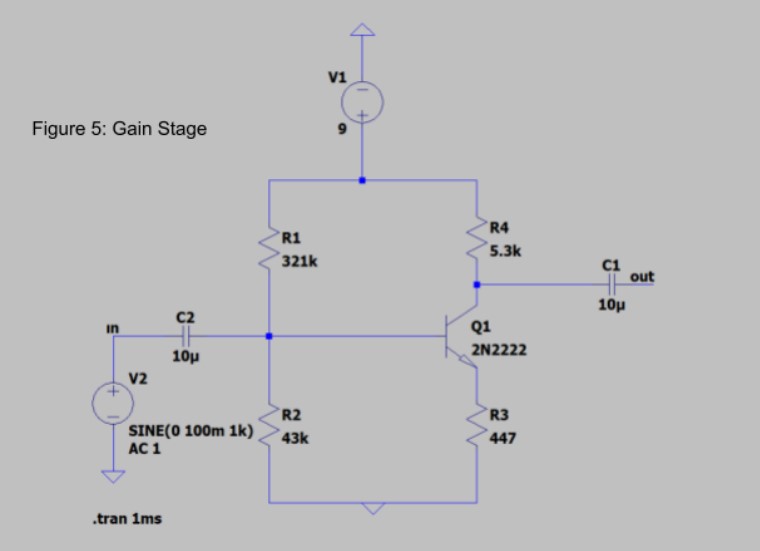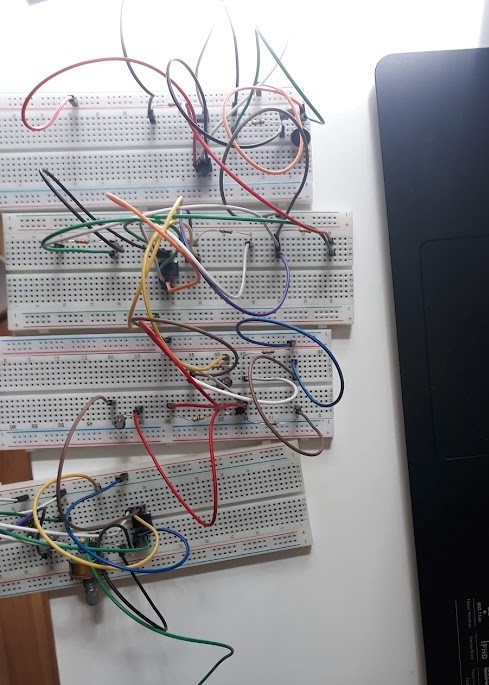
The design includes buffering the input signal with a source follower, filtering desired frequencies using low-pass and high-pass RC filters, and amplifying the signal by a factor of 11 using a common emitter voltage divider. Real-world resistances differed slightly from simulations, affecting performance, but similar resistances were used to maintain functionality, with testing confirming the desired frequency response.

